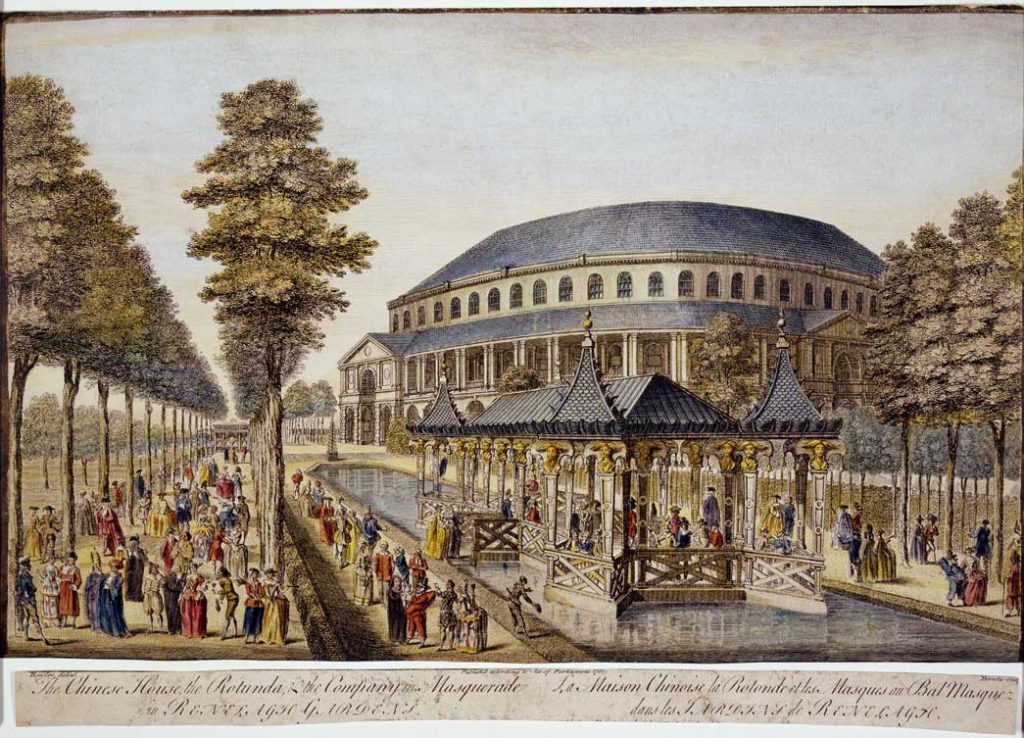A satirical view of London (1815)

We talked a bit about the Regency masquerade before, how it was introduced to England in the Georgian era and most popular at Vauxhall and Raneleagh Gardens during the late Georgian/early Regency era. The masquerade ball would persist into the Victorian era, until the overwhelming tide of morality would begin to squeeze out former activities increasingly seen as immoral and debauched.
Sometimes referred to as a ridotto, the masquerade was most appealing for its opportunity to wear opulent clothes and appear in disguise (Masquerades in the Pleasure Gardens | Museum of London). Appearing at one held in a public garden would also introduce an additional element of anonymity, and would often lead to sexual activity (Masquerade and Masked Balls | Encyclopedia.com). During the Georgian and Regency era, there was a sense among some people from the clergy and elsewhere that masquerades were sinful. Below is an article speculating about a naked masquerade proposed by a “celebrated lady” that shows a certain distaste for the masquerade, and also an acknowledgement of classism in the Regency era.
This article would be included in many compilations of British essays, and later identified as satire, so its highly likely the sole purpose of the article was to talk about classism and that no naked masquerade was ever actually in the works.

Read our top 30 list of Regencies where the heroine masquerades as a man: Top 30: Historical Romances Where the Heroine Masquerades as a Man – Regency Reader (regrom.com)
Author Lesley Anne McLeod has compiled several Regency era advertisements for masquerades here.
Author Geri Walton has a thorough post about the 18th century masquerade here.









